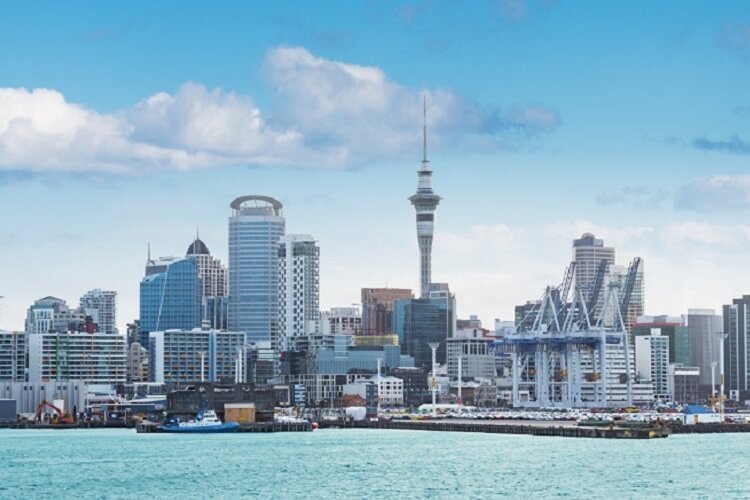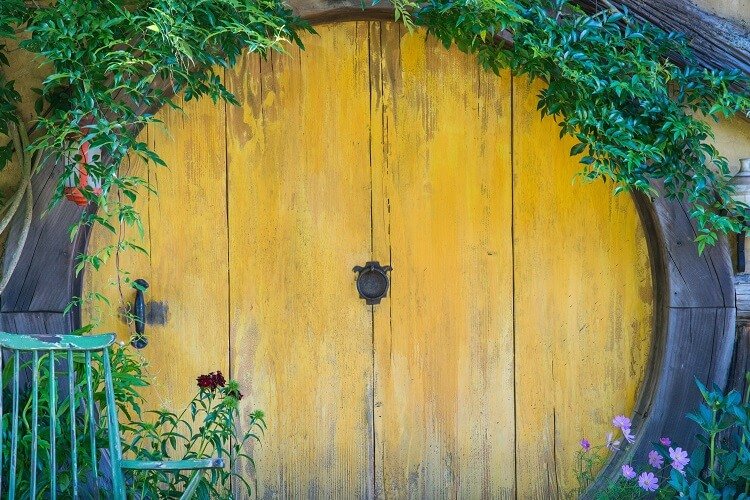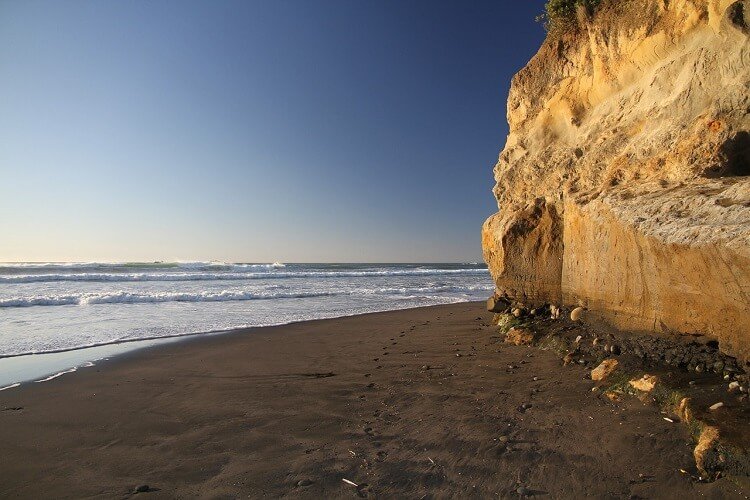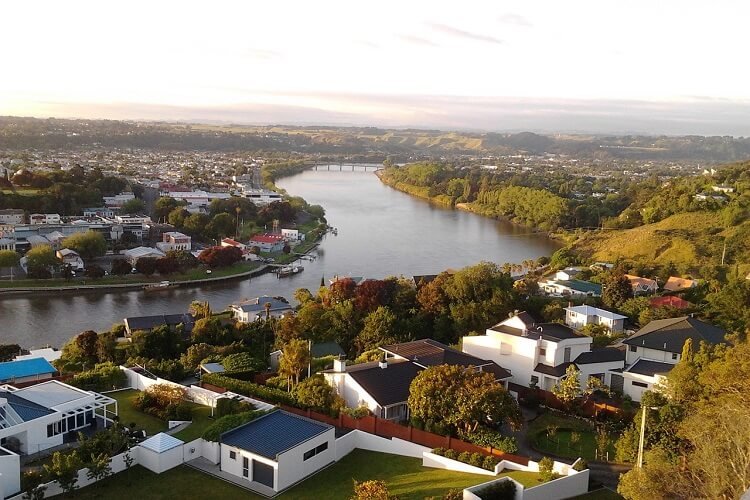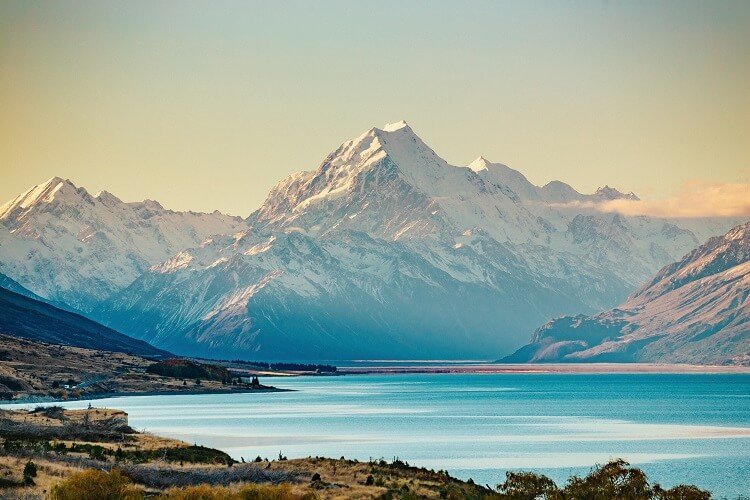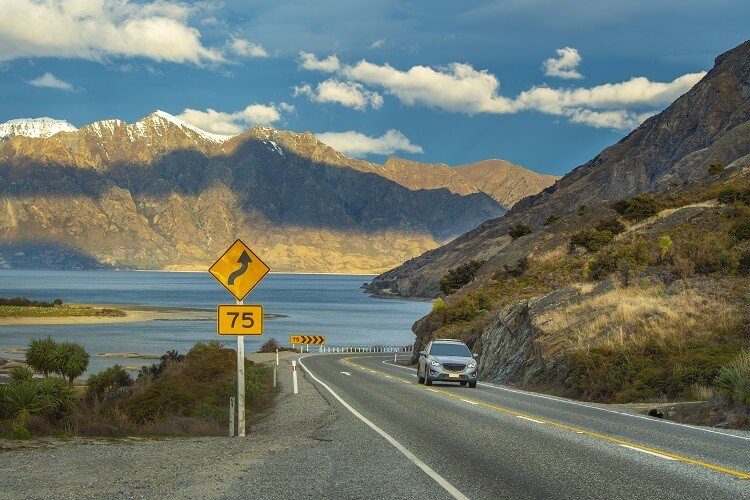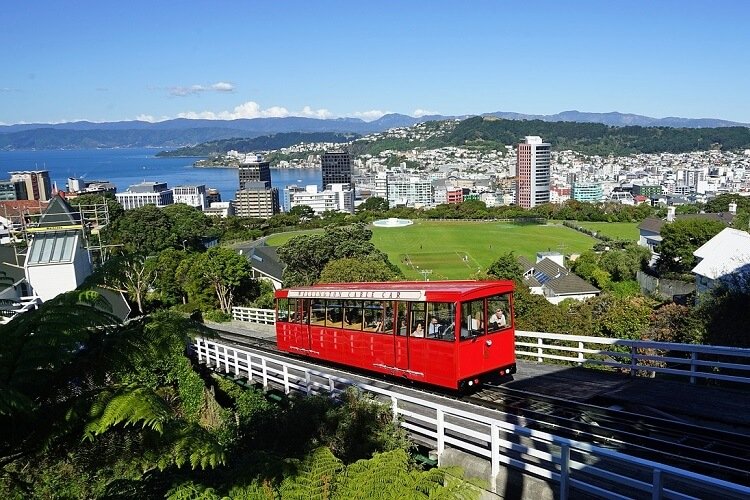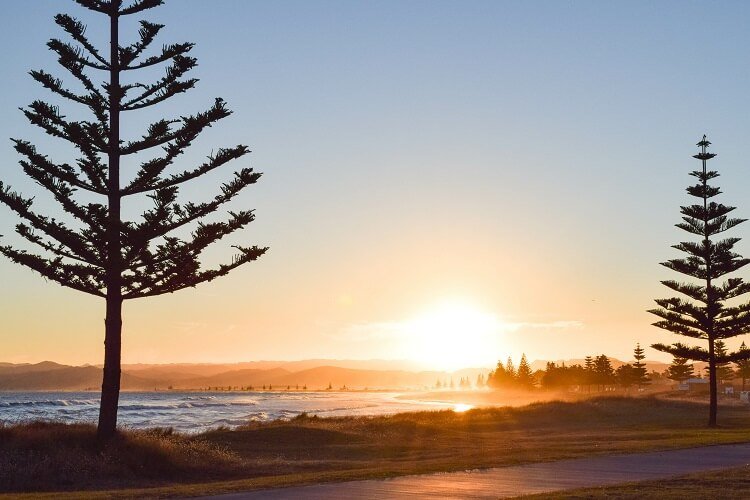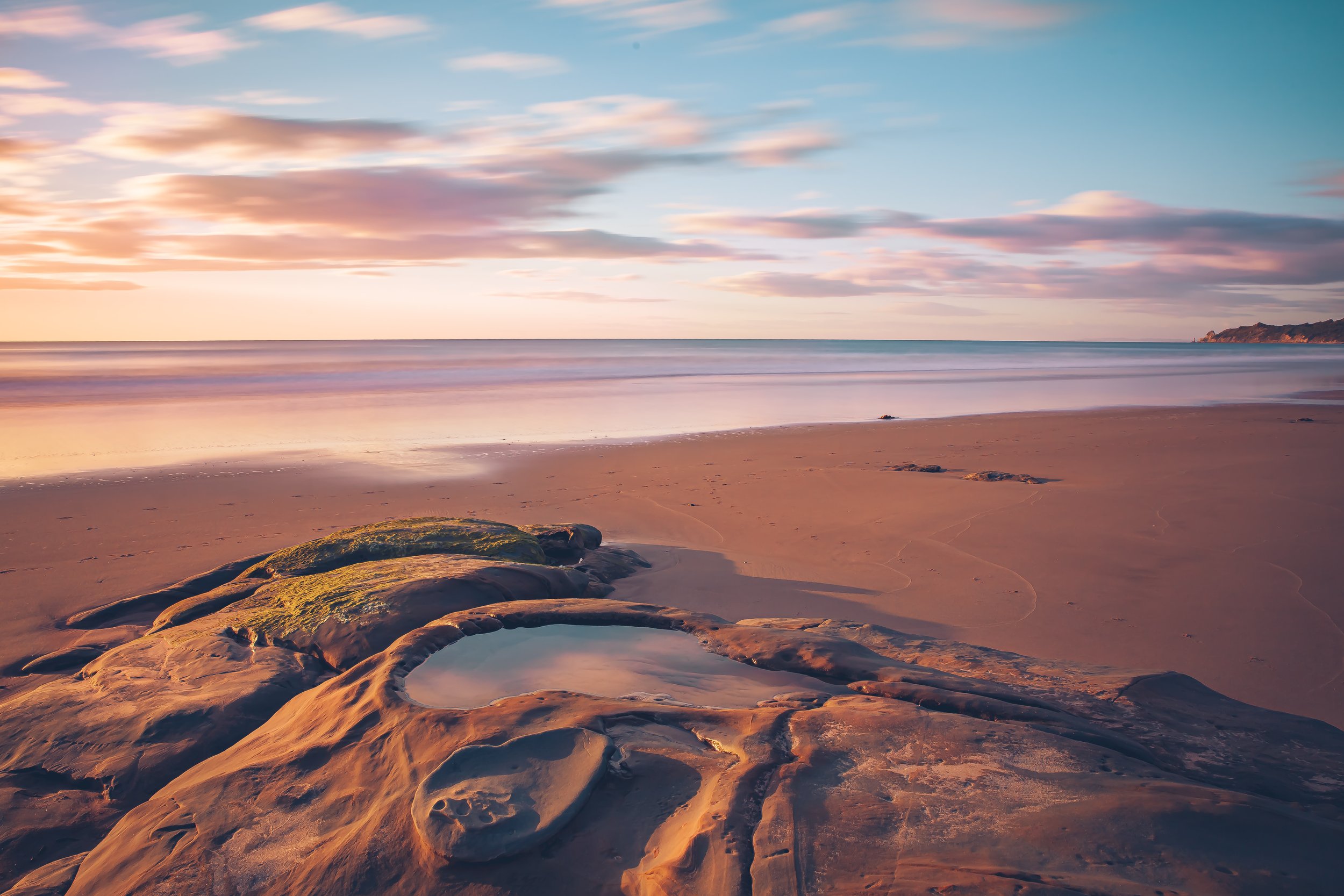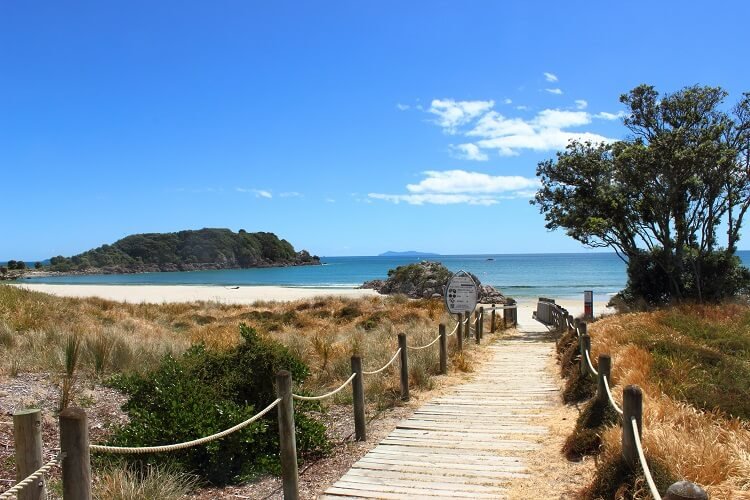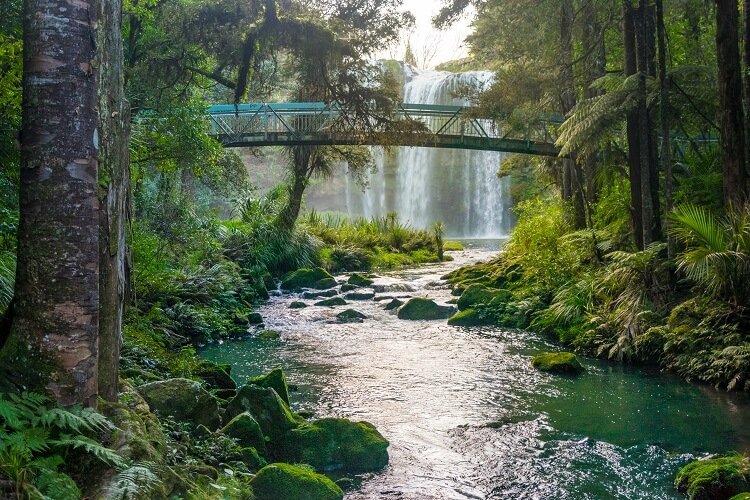Auckland
Auckland
Regularly ranked as one of the world’s most liveable cities, Auckland is New Zealand’s largest city and home to almost a third of its population. If you like water views, this is the place for you as the heart of the city occupies a narrow strip of land between the Manukau Harbour on the Tasman Sea and the Waitemata Harbour on the Pacific Ocean.
New Zealand’s most multicultural and cosmopolitan city, Auckland is where most migrants choose to settle. It has the largest Polynesian population of any city in the world and a higher proportion of Asians than any other city in New Zealand. Auckland is also the economic epicentre of New Zealand and where multinational corporations typically choose to base their offices.
Hemmed in with picturesque beaches and lush wine regions, Auckland has the critical mass of people required to support a vibrant restaurant, live music and arts scene. While it is small by world standards, it is at least five times larger than any of New Zealand’s other cities and the logical choice for those who desire the urban lifestyle.
Hamilton-Waitako
Hamilton-Waitako
Waikato’s central location between the Auckland, Bay of Plenty, Hawke’s Bay, Manawatu-Whanganui and Taranaki regions makes it a nationally significant corridor for infrastructure such as road and rail transport, electricity and natural gas, telecommunications and data.
Waikato is the most important minerals producing region in NZ with operations including coal, aggregates, and gold, sand and limestone.
The area boasts rolling green hills, spectacular limestone caves and black sand surf beaches as well as a vibrant city hub in Hamilton. Attractions include ‘Hobbiton’ in Matamata, The glow worm covered Waitomo Caves and the Pureora Forest full of walking and cycling trails with native birds and plant life.
The Waikato region is important to the national economy because of its scale and location and its contribution to national export sectors and infrastructure.
Waikato is the fourth-largest regional economy in New Zealand. It accounts for approximately 10 per cent of land area and population and 8.5 per cent of gross domestic product.
Hamilton is the region’s “central business district” with concentrations of employment, research, tertiary education and manufacturing. Its industry strengths are inextricably linked to the primary production of the surrounding region, on which it also relies for labour and materials.
Taranaki
Taranaki
Taranaki is situated on the west coast of the North Island, surrounding the volcanic peak. A notable feature of the Taranaki region is its reliance on the region’s natural and physical resources for its economic and social wellbeing.
The climate and soils of the region are suited to high producing pastures, which accounts for 57% of the region. Approximately 40% of the region is in indigenous forest and shrubland.
The region is home to Cape Egmont Lighthouse as well as many beautiful beaches and Paritutu Rock. At 2,518 m Mt Taranaki is a challenging but manageable climb that can be accessed between December to April without snow gear. The area’s stunning natural environment, rugged coastline and urban offerings mean you can be on the maunga in the morning, the beach in the afternoon and dining out in a top-class cafe or restaurant in the evening.
Taranaki has been dubbed 'the Texas of New Zealand', oil and gas stream in from offshore rigs. The presence of oil and gas in the region has given rise to new industries involved in the processing, distribution, use and export of hydrocarbons. Production stations or gas treatment plants are located at Oaonui, Kapuni, Waihapa, Rimu, Kaimiro and the McKee oil and gas fields.
Manawatu Wanganui
Manawatu Wanganui
The region is home to many high performing businesses, supporting the rural base.
The diverse landscape and our strong pastoral farming heritage have led the City, and its university, Massey, to develop a respected science and research base in agri-foods and food innovation. Its central location creates many unique advantages from which have developed significant capability in transport, warehousing and related logistics services.
It is a naturally efficient distribution hub as acknowledged by the long standing presence of Toyota, Ezibuy, Foodstuffs, DKSH, Woolworths NZ, Open Country Dairy, Suzuki Motors, Mars Pet Care, Affco and many others.
It is a powerful primary producer of agricultural business and food with some very smart innovations that are changing New Zealand and world practices; plus a significant and growing base of over 600 world class food scientists as well as many companies who are developing innovative products.
The Manawatu – Wanganui region is located in the lower half of the North Island of New Zealand, comprising the Local Territorial Authorities of the Tararua, Manawatu, Horowhenua, Rangitikei, Wanganui and Ruapehu districts and Palmerston North City. With over 50% of the land area comprising hill country the region is recognised as a significant sheep and beef producer. Other significant land uses include dairy farming, forestry and horticulture.
Education is a critical sector that makes an enormous contribution to our region’s economy, and is a massive draw card for talent and innovative projects – there is excellence here in Trades, Design, Defence, Aviation, Engineering, etc.
Defence has a long track record in the region, with Linton Army Base, Ohakea Air force Base and Waiouru Training Camp and together with support staff employ over 5% of the regions workforce.
Some key manufacturing industries have set up in this region because of the well stablished infrastructure such as rail, road and ultrafast internet and central position with close proximity to major markets.
Nelson Marlborough
Nelson Marlborough
The Nelson-Marlborough catchment, as defined by TEC includes the following territorial authorities: Tasman, Nelson City, Marlborough and Kaikoura.
The industries in which Nelson-Marlborough has the largest comparative advantages are fishing, forestry and logging, and food, beverage and tobacco manufacturing.
The Marlborough wine region is by far New Zealand's largest, accounting for three quarters of the country's wine production, 70% of its vineyard area and 85% of its wine exports. Internationally, Marlborough Sauvignon Blanc is recognised as world class; wine writers have described it as the best in the world.
Nelson is a city on the eastern shores of Tasman Bay, and is the economic and cultural centre of the Nelson region. Established in 1841, it is the second-oldest settled city in New Zealand and the oldest in the South Island and was proclaimed a city by royal charter in 1858. Marlborough is one of the regions of New Zealand, located in the northeast of the South Island, named after the famous English soldier and statesmen, the Duke of Marlborough.
Marlborough has a population of approximately 45,000 people and its industries include viticulture, aquaculture, tourism, agriculture and aviation.
Picton is the gateway to the famous Marlborough Sounds region renowned for stunning scenic bays, fishing spots, boutique accommodation and water sports.
Blenheim is the hub of the famous Marlborough wine district, the largest wine-growing area in the country.
West Coast
West Coast
The overall picture of the West Coast’s economy is one that is at the lower end of commodity cycles and in the process of structural change. The region’s gross domestic product (GDP) and employment is heavily concentrated in just a few sectors, with minerals, dairy, construction and tourism making up over 50 percent of the value of output and 40 percent of jobs.
The West Coast region has resourceful people, a rich history, a spectacular natural environment, and abundant resources. The same factors that have shaped its history and its people are what make the West Coast a challenging place to live and work. The Tai Poutini or West Coast region covers 23,000 square kilometres, or 8.5 percent of New Zealand’s land area. It is the longest region in New Zealand, spanning more than 600 kilometres from Kahurangi Point in the north to Awarua Point in the south.
The region in partnership with the Ministry of Business Innovation and Employment launched the Tai Poutini West Coast Growth Study which supports the region to build resilience and diversify its economy. The study explores opportunities to achieve growth in investment, incomes and employment in the region. It outlines the potential to strengthen infrastructure and diversify the economy of the West Coast region, while also identifying constraints to growth and recommending how these can be addressed.
Southland
Southland
Southland is New Zealand’s southernmost region and is also a district within that region. It consists mainly of the southwestern portion of the South Island and Stewart Island / Rakiura.
Southlands is home to the famous Milford Sounds, a fiord that is home to fur seal colonies, penguins and dolphins, with sheer edged mountains, rainforests and waterfalls. It’s the perfect place for kayaking or taking a more leisurely cruise tour. Stirling Point on the southern tip of the Bluff, where you can take boat trips to Rakiura/Stewart Island.
The region covers over 3.1 million hectares and spans over 3,400 km of coast. Southland has a strong economy with an abundance of natural resources and is based on primary production and process industries such as dairying, meat processing and the world class Tiwai Aluminium Smelter. Unemployment here is tracking more favourably than the national economy.
Otago
Otago
Otago accounts for 5% of NZ’s economy in employment terms. Its household incomes are lower than the national average, but its employment rate is above the national average. These factors relate to the very high proportion of tertiary students in Dunedin city, some of whom work part-time, and the significant presence of seasonal labour in other parts of the region.
Queenstown and Central Otago are amongst the fastest growing sub-regions in New Zealand, in both population and economic terms. The University of Otago is NZ’s most research-intensive university and the key generator of the region’s high per capita patent applications. The University and other tertiary institutions are key to meeting the skills and innovation needs of various sectors in the regional economy.
Half of Otago’s population live in Dunedin, which provides services to the surrounding region as well as national health and education services. Other districts each have different specialisations, including hydro-electric power generation, tourism, sheep and beef farming, gold and silver mining, horticulture and wine making.
Christchurch & Canterbury
Christchurch & Canterbury
In Christchurch, you can experience urban regeneration, creativity and innovation flowing through the city with new restaurants & bars, street art and vibrant new retail areas, all the while staying true to its heritage and traditional English feel. Known traditionally as “The Garden City”, the serene Avon River flows through the centre of the city through to the award-winning Christchurch Botanic Gardens.
With contemporary art galleries and open-air markets, explore Christchurch by vintage tram, a classic Edwardian punt, or grab your walking shoes and discover the growing network of laneways brimming with bars, eateries and an eclectic mix of boutique shops.
Set against a majestic alp to ocean backdrop, Christchurch & Canterbury offers visitors one of the world’s most unique and diverse destinations. You’ll find it all - a picturesque city, the sparkling Pacific Ocean, the majestic Southern Alps and an ancient volcanic peninsula dotted with charming townships and hidden bays.
Canterbury offers some of New Zealand’s most diverse experiences, all within a short drive. Feel the spirit and heart of New Zealand, with a strong Maori cultural embrace an abundant marine life in Kaikoura, or discover sparkling bays, seaside villages and cafes in Akaroa and Banks Peninsula. Sit back, relax and spoil yourself with the natural thermal springs hot pools and day spas, in Hanmer Springs and enjoy the delights of the nearby Waipara Valley wine region.
Experience the breath-taking scenery of Arthur’s Pass in the Selwyn District, high country snow-fed lakes bordered by impressive braided rivers in Mid and South Canterbury, and the Mackenzie Districts magical turquoise lakes, powerful glaciers and sky piercing Alps.
Canterbury is a land of incredible scenery and adventure… all waiting at your fingertips.
Wellington
Wellington
In 2011, Lonely Planet dubbed Wellington the “coolest little capital in the world”. Located at the south western tip of the North Island, it is New Zealand’s capital and third-largest city. The Wellington region is made up of interlinked but distinct areas: Wellington, which plays host to the CBD and about half the population; the heavily Maori and Pacific Islander areas of Porirua; and the largely suburban commuter towns of Lower and Upper Hutt.
The city has more cafes per capita than New York City, and has a strong coffee culture. Wellington also has many natural spaces. Take the iconic Cable Car up to the Botanic Garden or meander the many trails of the Town Belt. With its many coastlines, Wellington is also teeming with beaches.
Like the residents of capital cities the world over, Wellingtonians are blessed with a disproportionate number of museums and galleries. There are also plenty of boutiques and theatres as well as a thriving café culture and bar scene. While Wellington looks spectacular thanks to its majestic harbour and craggy shores, be warned that the world’s southernmost capital city is infamous for its chilly, gale-force winds.
Hawkes Bay
Hawkes Bay
The Hawke’s Bay region accounts for approximately 7% of national primary industries GDP, with the largest contributions being fruit growing, grape growing and forestry/logging. The region also accounts for 7% of national processing GDP, with the largest shares being for fruit and vegetable processing, wine-making, meat processing and textile processing.
Whether it be a walk up Te Mata Peak, an adrenaline-filled rafting trip down the Mohaka River, cycling some of the 200km of cycling trails, or perhaps a lazy day at the Beach - you'll never run out of things to do in Hawkes Bay.
Hawke’s Bay is a region of New Zealand, located on the east coast of the country’s North Island. Hawke’s Bay is recognised on the world stage for its award-winning wines. The regional council sits in both the cities of Napier and Hastings.
The region accounts for approximately 2% of national manufacturing sector GDP and about 3% of the country’s service sector GDP.
Economic growth in Hawke’s Bay is strongly influenced by international economic conditions directly and indirectly impacting its significant primary industries and processing sectors.
There are many excellent golf courses, an opera house, museums, art galleries and sports arenas. The region hosts several classic road cycle races. It is also the location of an annual Art Deco weekend and the Mission Estate Concert.
Gisborne
Gisborne
Forestry is delivering a massive economic benefit to the Gisborne region and is already the third largest export producer of logs.
Forestry is worth more than $225 million a year in the East Coast region, overtaking sheep and beef farming, at $206m the other key sector in the region, the report by Waikato University shows. Including the spill over effect into other activity around the region there was a “flow-on” value of $383m from forestry.
“Gisborne has a relaxed, laid-back lifestyle, with a strong focus on outdoor activities. The city is surrounded by national parks and forests, offering plenty of opportunities for hiking, biking, and camping. The city is safe, with a low crime rate, but like anywhere, it's important to take common-sense precautions. It's worth noting that Gisborne is in an earthquake-prone region, so it's important to be prepared and familiarize yourself with the local emergency procedures"
Gisborne makes up 1% of NZ’s economy in employment terms. It includes some of NZ’s most remote areas, with mountainous topography and difficult transport routes. Gisborne also has a very different age and ethnic profile compared to the country as a whole. Nearly half the population is Maori (47% compared to 14% for NZ), and it is correspondingly younger than most other regions.
Expat Exchange asked people what advice they would give someone preparing to move to Gisborne, they said: “Gisborne is a small city located on the east coast of the North Island, known for its beautiful beaches, great surf, and sunny climate. It is the first city in the world to see the sunrise each day. The city is relatively isolated, with the nearest major city, Napier, being a three-hour drive away. The cost of living in Gisborne is relatively low compared to other parts of New Zealand, with affordable housing options available.”
Bay Of Plenty
Bay Of Plenty
Come and live where New Zealanders most want to live - the sunny Bay of Plenty. One of New Zealand’s most popular holiday destinations and a thriving port city is Tauranga. The city is leading the country for economic growth, meaning there are plenty of career and business opportunities for people considering moving to New Zealand.
One of the largest drivers of business relocations and job creation is proximity to the Port of Tauranga – the largest export port in New Zealand and among the 10 most efficient ports in the world. The port has a $350 million capital development programme underway which includes deepening the harbour to allow the next generation of container ships to be accommodated.
The quality of NZ’s education system is world renowned. With Tauranga one of the most sought after places to live, the city attracts teachers of a very high calibre and has excellent educational facilities. There are many choices when it comes to how primary and secondary school education is delivered, ranging from state funded co-educational schools and single sex schools, as well as private education providers.
Bay of Plenty was the country’s fastest growing regional economy in the year to March 2015 and topped the list in terms of job growth from 2013 to 2014, at a massive 13 per cent. It offers plenty of space, world class surfing beaches, bush clad mountains, affordable housing and great facilities. It is well known for festivals and events, and the sunny climate means these activities can be enjoyed all year round.
Bay Of Plenty is also a region popular for tourism, with excellent beaches, Maori culture and geological marvels. The area includes Rotorua’s famous bubbling mud pools and the 30m-tall Pohutu Geyser as well as a living Maori village and the New Zealand Maori Arts and Crafts Institute, with traditional wood carving and weaving schools.
Over the last few years the Bay of Plenty economy has undergone a significant transformation, with an increase in businesses moving to the area, a rise in new start-up companies and strong job growth, resulting in the diversification of key employment sectors. It is increasingly becoming a hub for entrepreneurs and innovative companies, underpinned by investment in research and development.
Northland
Northland
Northland represents approximately 3.6 percent of the country’s population, with more than 168,000 people living in the region and over half of those living in the main centre of Whangārei. With close proximity to New Zealand’s largest city, Auckland, but with a warmer climate and vast natural resources, there are many reasons why Northland is a very attractive destination to visit, live, work and invest.
It also identified key sectors that have opportunities for growth such as farming, forestry, horticulture, aquaculture, manufacturing, construction, mining, and marine. The Action Plan leverages partners and collaborators to work on projects of regional significance. Its Working Group is led and facilitated by Northland Inc supported by an Advisory Group representing central and local government, business and iwi.
Major initiatives to facilitate and enable business and investment in the region are complemented by Northland’s exceptional lifestyle options.
Northland Inc is the Regional Economic Development Agency encompassing the Regional Tourism Organisation (RTO). Northland Inc’s mission is to strengthen, diversify and grow the Northland economy through five work programmes.
The Northland economy is underpinned by industries that harness natural advantages based around land, water, climate and cultural assets.
The Tai Tokerau Northland Economic Action Plan launched in February 2016 set the stage for economic development and business growth by prioritising enabling infrastructure improvements relating to transport, digital infrastructure, skills, and water management.
1. Business Innovation and Growth
2. Investment and Infrastructure
3. Māori Economic Development
4. Regional Promotions and Tourism
5. Tai Tokerau Northland Economic Action Plan
The area is a forested, subtropical region on New Zealand's North Island, framed by the Pacific Ocean and Tasman Sea. The Bay of Islands is studded with sheltered beaches, wineries and colonial-era towns like Russell. It’s also home to the Waitangi Treaty Grounds, a historic Maori site. Famed for its sandboarding dunes, Ninety Mile Beach stretches along the west coast toward Cape Reinga.



